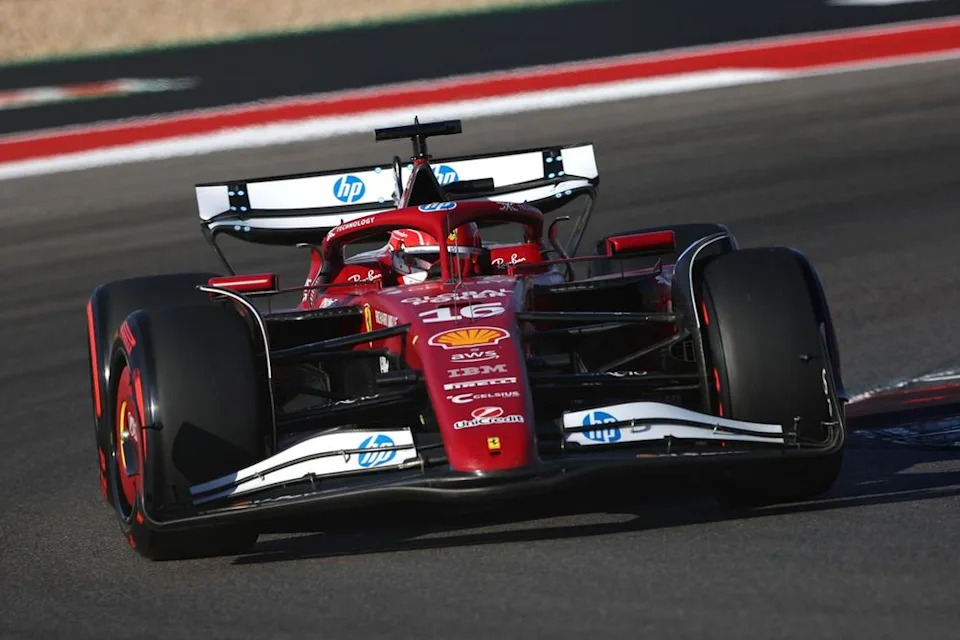Among the many starkest classes of the 2025 season has been that if you wish to win grands prix, you need to undertake excessive options тАУ notably with the best way you run the ground, a very powerful downforce-generator on the automotive. affords the proof: the prevalence it confirmed within the first a part of the 12 months stemmed exactly from hidden improvements guiding the design of the MCL39.┬аCrimson Bull’s latest renaissance demonstrates it has belatedly caught on to an identical method, having wasted the primary a part of the 12 months (underneath the earlier management) fruitlessly accusing McLaren of dishonest.┬аOne other crew that attempted to take this path was , which adopted a brand new design philosophy with the SF-25 to beat the structural limits of the SF-24 тАУ by then on the finish of its improvement potential. To win, it was essential to go additional with bolder decisions, and the mechanical and aerodynamic modifications have been meant to unleash creativity not solely through the winter, but additionally all through the season.┬аRight here lies the paradox: these very modifications, which have been imagined to unlock new alternatives, have develop into a restrict on improvement. The purpose was to start out the season with a aggressive automotive тАУ however these design decisions, which held Ferrari again from the very first races, finally stifled its potential for progress over the course of the championship.
Charles Leclerc, Ferrari
Charles Leclerc, Ferrari
It is no secret the SF-25 is extraordinarily delicate to variations in trip peak. This is a matter widespread to all ground-effect vehicles, however in Ferrari’s case this 12 months it has develop into an much more restrictive issue тАУ one which induced a cascading influence from the very first grand prix in Australia all the best way to the newest races. ┬аIt was an issue notably evident on the Circuit of The Americas, a observe with a number of the most irregular asphalt on your entire calendar, owing to the positioning having been constructed on reclaimed swampland that’s susceptible to subsidence.┬аFriday was a case examine for Ferrari’s total season. Whatever the negativity expressed by the Italian media, the crew reacted strongly тАУ each technically and operationally тАУ to a disappointing day. ┬а┬аThe issue is that whereas Ferrari confirmed wonderful information evaluation and interpretation by the setup modifications and the eye to element by way of briefing the drivers on how you can put together on the outlap throughout qualifying, it was primarily making the most effective of a nasty state of affairs. And this brings us to the foundation of the issue: the administration of trip heights has deeply affected Ferrari’s season, turning right into a limitation that can not be solved.
Commercial
Managing trip heights is extra complicated than it appears
There is a essential level to know: it is not nearly how low the automotive runs. Each single automotive wears down its skid block otherwise, even on the identical trip peak, as a result of each has its personal aerodynamic map. Because of this the factors the place stress and downforce are generated underneath the ground are distributed otherwise from automotive to automotive.
Lewis Hamilton, Ferrari
Lewis Hamilton, Ferrari
It is no coincidence that the FIA carries out checks on a number of areas of the skid block, since some zones can come nearer to the asphalt than others, with various load peaks.┬аIt is a delicate balancing act тАУ much more complicated than it might sound тАУ which is baked into the very design part of a System 1 automotive, from mechanics to aerodynamics. Already throughout pre-season testing, it was clear that Ferrari had tried to shift the stability of the automotive over the winter, redistributing it by particular decisions in chassis design, mechanical format, and aerodynamics.┬аThese three components тАУ together with the redesigned rear suspension, which was additional modified through the season тАУ reshaped the stress zones underneath the ground in an try to make downforce era extra constant than up to now, thereby unlocking extra efficiency. The issue is that these decisions ended up creating an sudden impact: irregular skid block put on, one thing that hadn’t proven up in simulations.
Commercial
The place groups work to search out a bonus
It was former Ferrari engineer Inaki Rueda, now sporting director of , who explicitly expressed why some groups are discovering it tougher to handle trip peak than others.┬а“I believe many groups wrestle with put on on the rear part of the skid block,” he stated within the FIA-mandated tech briefing through the Austin GP weekend. ┬а“However those that handle to distribute it higher by shifting it towards the entrance can run decrease than the others. That is a really good factor тАУ whoever can try this beneficial properties a aggressive benefit. You need to generate downforce from the rear, however be certain the purpose of contact is on the entrance.”
This is likely one of the causes McLaren is usually in a position to run decrease than its rivals with out encountering the identical limitations тАУ as demonstrated in Barcelona, the place the automotive was porpoising vigorously sufficient to make it contact the bottom by very quick corners. It is no shock, then, that crew boss Andrea Stella described the automotive as revolutionary on a number of fronts тАУ and even Crimson Bull regained efficiency by working, amongst different features, on trip heights.
Commercial
Lewis Hamilton, Ferrari
Lewis Hamilton, Ferrari
This additionally explains why the sparks created underneath the automotive тАУ produced by the titanium skid plates positioned on the ahead part of the plank тАУ are solely a partial indicator of how low a automotive is working. The damage on the ground is neither uniform nor constant among the many completely different vehicles on the grid, though groups clearly cannot go too far in the other way both. That is the place the necessity to discover a correct stability comes into play.
Commercial
A problem rooted within the venture and tough to repair
When ground put on turns into too concentrated in a particular space, such because the rear, the crew is compelled to boost the automotive, inevitably sacrificing downforce as air is drawn from the edges тАУ a few of it turbulent, brought on by rear tyre тАШsquish’. This downside affected Ferrari notably at first of the season, even on circuits the place the asphalt was theoretically smoother: clear proof the Scuderia was attempting to run as little as attainable to extract each final hundredth of a second from the automotive.┬аThe problem is that this pronounced sensitivity to trip peak impacts not solely how a lot downforce is generated, but additionally how the automotive is ready up in different areas, particularly the suspension, which will be tuned to be kind of stiff relying on the circuit necessities. The result’s a sequence response that, in excessive instances, can push the automotive properly outdoors its optimum working window, resulting in a pointy drop in efficiency тАУ and typically forcing mid-race changes throughout pitstops (as in Hungary) and even modifications to the racing traces.┬аIt is an issue that stems from the automotive’s very design and is not simple to repair through the season. Ferrari has tried to intervene on each the aerodynamic entrance, by introducing a brand new ground, and the mechanical one, in an effort to widen the working window and regain some margin. Nevertheless it’s removed from a easy job; it requires each time and sources. ┬аFor that reason тАУ and since it turned clear that the preliminary targets may not be met тАУ Maranello determined to halt improvement of the SF-25 early and focus its efforts on subsequent season’s venture.
To learn extra Motorsport.com articles .











